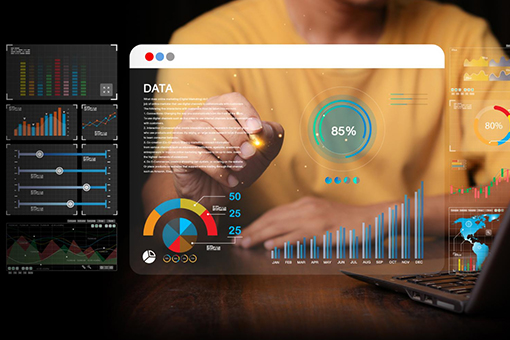Managing people has always been one of the most challenging aspects of running a business. But in today’s data-driven world, relying on intuition or outdated processes simply doesn’t cut it. HR Analytics is changing the game by turning raw workforce data into actionable insights, helping businesses make smarter, evidence-based decisions.
Think about it: what if you could predict which employees are likely to leave, spot potential performance issues before they become problems, or even fine-tune your hiring process to find the perfect candidate every time? That’s the power of HR Analytics.
In this blog, we’ll dive into what HR Analytics really means, how it works, and why it’s becoming a critical tool for businesses looking to drive better outcomes through smarter workforce management.
Table of Contents
What is HR Analytics?
HR analytics is the process of using data to understand and improve various aspects of a company’s workforce, like employee performance, hiring, and retention. It helps HR teams make better decisions by analyzing trends and patterns in employee data. This includes everything from hiring patterns and employee turnover rates to productivity and engagement levels. The goal is simple: to provide HR professionals and business leaders with the insights they need to make better decisions about their people.
Rather than relying on guesswork, HR Analytics allows companies to use data to predict trends, spot potential issues early, and make proactive decisions. For example, if data reveals that employees in a certain department are consistently leaving after two years, HR teams can take steps to address the root cause before it leads to more turnover.
Why HR Analytics is Crucial for Modern Businesses
1. Data-Driven Decision Making
HR used to be an area where many decisions were made based on gut feelings or anecdotal evidence. But in today’s data-driven world, relying solely on intuition isn’t enough. HR Analytics provides concrete data that supports key HR decisions—from recruitment to performance management—ensuring they’re backed by evidence rather than guesswork.
2. Predict and Reduce Employee Turnover
One of the biggest challenges businesses face is employee turnover. Replacing an employee can cost anywhere from 30% to 200% of their annual salary, depending on the role. HR Analytics helps predict which employees are likely to leave by analyzing patterns such as job satisfaction, engagement scores, and performance metrics. By identifying these trends early, HR can take proactive steps to retain top talent.
3. Improve Recruitment Outcomes
Finding the right candidates for your business is no easy task, and hiring mistakes can be costly. HR Analytics enhances recruitment by analyzing data from past hires, including factors like performance and retention. This allows you to refine your hiring process, ensuring you select candidates who are not only qualified but also a good cultural fit for the organization.
4. Boost Employee Engagement
Employee engagement is directly linked to productivity, satisfaction, and retention. HR Analytics can track engagement levels across different teams, roles, and departments, helping businesses identify areas that need improvement. With this data, HR teams can create targeted initiatives to boost engagement, whether through new development programs, better communication strategies, or more effective recognition practices.
5. Optimize Training and Development
It’s important for businesses to invest in the right kind of training that aligns with both employee and company needs. HR Analytics helps identify skill gaps within the workforce, allowing HR teams to tailor development programs that address those specific areas. Additionally, tracking the impact of training on employee performance provides valuable insights into the ROI of your learning and development initiatives.
The HR Analytics Process: Turning Data Into Action
The process of HR Analytics involves several key steps, each designed to turn raw data into actionable insights:
1. Data Collection
HR Analytics begins with gathering data from a variety of sources. This can include employee records, performance evaluations, engagement surveys, compensation data, and even exit interviews. The key here is to collect accurate and relevant data that will provide valuable insights.
2. Data Analysis
Once the data is collected, it’s time to analyze it. HR professionals use statistical tools and algorithms to identify trends and patterns. This could be as simple as understanding which departments have the highest turnover rates or as complex as predicting which employees are likely to leave based on multiple factors.
3. Generating Insights
The next step is transforming raw data into meaningful insights. For example, you might find that employees with low engagement scores are more likely to leave within six months. These insights can help HR teams make informed decisions about where to focus their efforts.
4. Action Planning
With insights in hand, HR teams can create targeted action plans. This might involve adjusting hiring practices, developing retention strategies, or offering additional training programs. The goal is to take proactive measures based on the data.
5. Continuous Monitoring
HR Analytics isn’t a one-time process. It’s important to continuously monitor key metrics to assess the impact of any changes and make adjustments as needed. Regular tracking ensures that HR strategies remain aligned with business goals.
Key Metrics to Focus on in HR Analytics
When implementing HR Analytics, focusing on the right metrics is essential for driving meaningful results. Some of the most critical HR Analytics metrics include:
- Turnover Rate: This metric measures the percentage of employees who leave over a certain period. It helps identify retention issues within specific departments or job roles.
- Time-to-Hire: This tracks the average time it takes to fill a position, helping organizations identify inefficiencies in their recruitment process.
- Employee Engagement: These metric measures how motivated and engaged employees feel. Engagement surveys and other tools can provide valuable insights into how connected employees are to their roles and the company.
- Absenteeism: Tracking employee absenteeism helps businesses identify potential issues such as burnout or disengagement. High absenteeism rates can be a sign that something needs to change in the workplace culture.
- Performance Metrics: Tracking performance allows companies to identify high-performing employees and recognize areas where additional support or training may be needed.
What Lies Ahead
As technology continues to evolve, the future of HR Analytics looks promising. Predictive analytics and artificial intelligence (AI) will become more integrated into HR processes, allowing for even deeper insights. Businesses will be able to predict talent needs, anticipate turnover, and even develop more personalized employee engagement strategies based on real-time data.
With hybrid work models becoming more common, HR Analytics will also play a crucial role in monitoring and managing employee productivity and engagement across remote and in-office teams. Companies that embrace these advancements will be better positioned to manage their workforce and stay competitive in a rapidly changing business environment.













